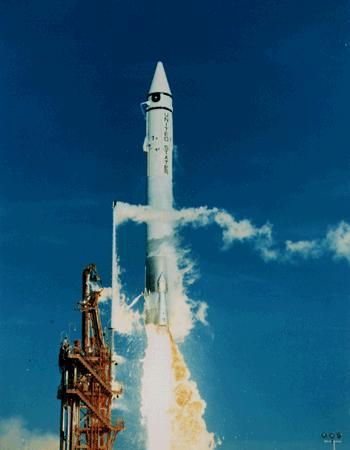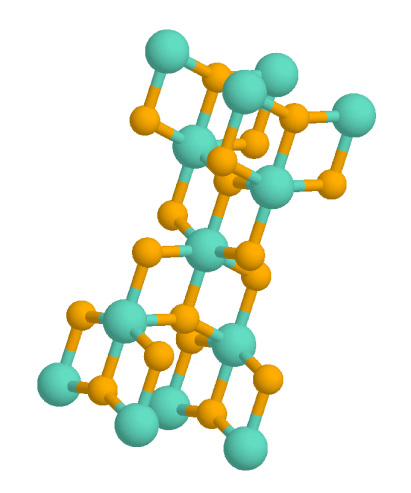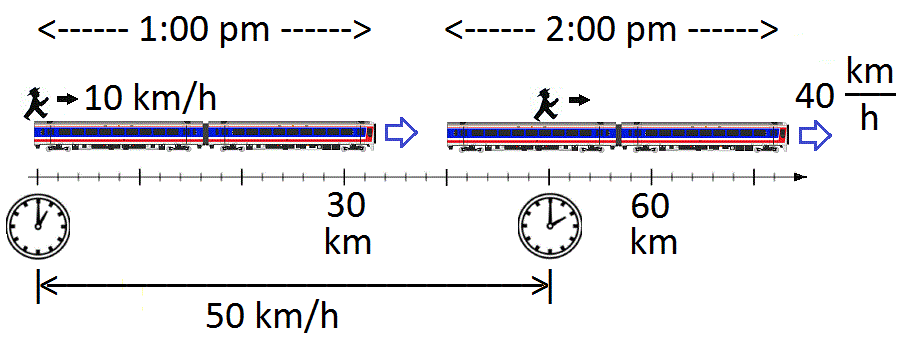|
2020 SO
2020 SO is a near-Earth object identified to be the Centaur upper stage used on 20 September 1966 to launch the Surveyor 2 spacecraft. The object was discovered by the Pan-STARRS 1 survey at the Haleakala Observatory on 17 September 2020. It was initially suspected to be an artificial object due to its low velocity relative to Earth and later on the noticeable effects of solar radiation pressure on its orbit. Spectroscopic observations by NASA's Infrared Telescope Facility in December 2020 found that the object's spectrum is similar to that of stainless steel, confirming the object's artificial nature. Following the object's confirmation as space debris, the object was removed from the Minor Planet Center's database on 19 February 2021. Overview As it approached Earth, the trajectory indicated the geocentric orbital eccentricity was less than 1 by 15 October 2020, and the object became temporarily captured on 8 November when it entered Earth's Hill sphere. It entered via the o ... [...More Info...] [...Related Items...] OR: [Wikipedia] [Google] [Baidu] |
Pan-STARRS
The Panoramic Survey Telescope and Rapid Response System (Pan-STARRS1; List of observatory codes, obs. code: IAU code#F51, F51 and Pan-STARRS2 obs. code: IAU code#F52, F52) located at Haleakala Observatory, Hawaii, US, consists of astronomical cameras, telescopes and a computing facility that is Astronomical survey, surveying the sky for moving or variable objects on a continual basis, and also producing accurate astrometry and photometry (astronomy), photometry of already-detected objects. In January 2019 the second Pan-STARRS data release was announced. At 1.6 petabytes, it is the largest volume of astronomical data ever released. Description The Pan-STARRS Project is a collaboration between the University of Hawaiʻi Institute for Astronomy (Hawaii), Institute for Astronomy, MIT Lincoln Laboratory, MHPCC#Maui High Performance Computing Center (MHPCC), Maui High Performance Computing Center and Science Applications International Corporation. Telescope construction was funde ... [...More Info...] [...Related Items...] OR: [Wikipedia] [Google] [Baidu] |
Space Debris
Space debris (also known as space junk, space pollution, space waste, space trash, space garbage, or cosmic debris) are defunct human-made objects in spaceprincipally in Earth orbitwhich no longer serve a useful function. These include derelict spacecraft (nonfunctional spacecraft and abandoned launch vehicle stages), mission-related debris, and particularly numerous in-Earth orbit, fragmentation debris from the breakup of derelict rocket bodies and spacecraft. In addition to derelict human-made objects left in orbit, space debris includes fragments from disintegration, erosion, or collisions; solidified liquids expelled from spacecraft; unburned particles from solid rocket motors; and even paint flecks. Space debris represents a risk to spacecraft. Space debris is typically a negative externality. It creates an external cost on others from the initial action to launch or use a spacecraft in near-Earth orbit, a cost that is typically not taken into account nor fully accoun ... [...More Info...] [...Related Items...] OR: [Wikipedia] [Google] [Baidu] |
Titanium Dioxide
Titanium dioxide, also known as titanium(IV) oxide or titania , is the inorganic compound derived from titanium with the chemical formula . When used as a pigment, it is called titanium white, Pigment White 6 (PW6), or Colour Index International, CI 77891. It is a white solid that is insoluble in water, although mineral forms can appear black. As a pigment, it has a wide range of applications, including paint, sunscreen, and food coloring. When used as a food coloring, it has E number E171. World production in 2014 exceeded 9 million tonnes. It has been estimated that titanium dioxide is used in two-thirds of all pigments, and pigments based on the oxide have been valued at a price of $13.2 billion. Structure In all three of its main dioxides, titanium exhibits Octahedral molecular geometry, octahedral geometry, being bonded to six oxide anions. The oxides in turn are bonded to three Ti centers. The overall crystal structures of rutile and anatase are tetragonal in symmetry ... [...More Info...] [...Related Items...] OR: [Wikipedia] [Google] [Baidu] |
Relative Velocity
The relative velocity of an object ''B'' relative to an observer ''A'', denoted \mathbf v_ (also \mathbf v_ or \mathbf v_), is the velocity vector of ''B'' measured in the rest frame of ''A''. The relative speed v_ = \, \mathbf v_\, is the vector norm of the relative velocity. Classical mechanics In one dimension (non-relativistic) We begin with relative motion in the classical, (or non- relativistic, or the Newtonian approximation) that all speeds are much less than the speed of light. This limit is associated with the Galilean transformation. The figure shows a man on top of a train, at the back edge. At 1:00 pm he begins to walk forward at a walking speed of 10 km/h (kilometers per hour). The train is moving at 40 km/h. The figure depicts the man and train at two different times: first, when the journey began, and also one hour later at 2:00 pm. The figure suggests that the man is 50 km from the starting point after having traveled (by walking and ... [...More Info...] [...Related Items...] OR: [Wikipedia] [Google] [Baidu] |
Atlas-Centaur
The Atlas-Centaur was a United States expendable launch vehicle derived from the SM-65 Atlas D missile. The vehicle featured a Centaur (rocket stage), Centaur upper stage, the first such stage to use high-performance liquid hydrogen as fuel. Launches were conducted from Cape Canaveral Launch Complex 36, Launch Complex 36 at the Cape Canaveral Space Force Station, Cape Canaveral Air Force Station (CCAFS) in Florida. After a strenuous flight test program, Atlas-Centaur went on to launch several crucial spaceflight missions for the United States, including Surveyor 1, and Pioneer Pioneer 10, 10/Pioneer 11, 11. The vehicle would be continuously developed and improved into the 1990s, with the last direct descendant being the highly successful Atlas II. Early development Convair, the manufacturer of the Atlas, developed the Centaur (rocket stage), Centaur upper stage specifically for that booster, sharing its pressure-stabilized tank structure. Technical Centaur was the first r ... [...More Info...] [...Related Items...] OR: [Wikipedia] [Google] [Baidu] |
Jet Propulsion Laboratory
The Jet Propulsion Laboratory (JPL) is a Federally funded research and development centers, federally funded research and development center (FFRDC) in La Cañada Flintridge, California, Crescenta Valley, United States. Founded in 1936 by California Institute of Technology (Caltech) researchers, the laboratory is now owned and sponsored by NASA and administered and managed by Caltech. The primary function of the laboratory is the construction and operation of planetary robotic spacecraft, though it also conducts Earth-orbit and astronomy missions. It is also responsible for operating the NASA Deep Space Network (DSN). Among the major active projects at the laboratory, some are the Mars 2020 mission, which includes the ''Perseverance (rover), Perseverance'' rover; the Mars Science Laboratory mission, including the ''Curiosity (rover), Curiosity'' rover; the ''Mars Reconnaissance Orbiter''; the ''Juno (spacecraft), Juno'' spacecraft orbiting Jupiter; the ''Soil Moisture Active P ... [...More Info...] [...Related Items...] OR: [Wikipedia] [Google] [Baidu] |
Paul Chodas
Paul may refer to: People * Paul (given name), a given name, including a list of people * Paul (surname), a list of people * Paul the Apostle, an apostle who wrote many of the books of the New Testament * Ray Hildebrand, half of the singing duo Paul & Paula * Paul Stookey, one-third of the folk music trio Peter, Paul and Mary * Billy Paul, stage name of American soul singer Paul Williams (1934–2016) * Vinnie Paul, drummer for American Metal band Pantera * Paul Avril, pseudonym of Édouard-Henri Avril (1849–1928), French painter and commercial artist * Paul, pen name under which Walter Scott wrote ''Paul's letters to his Kinsfolk'' in 1816 * Jean Paul, pen name of Johann Paul Friedrich Richter (1763–1825), German Romantic writer Places *Paul, Cornwall, a village in the civil parish of Penzance, United Kingdom *Paul (civil parish), Cornwall, United Kingdom *Paul, Alabama, United States, an unincorporated community *Paul, Idaho, United States, a city *Paul, Nebraska, United Sta ... [...More Info...] [...Related Items...] OR: [Wikipedia] [Google] [Baidu] |
Surveyor 2 Launch
Surveying or land surveying is the technique, profession, art, and science of determining the land, terrestrial Plane (mathematics), two-dimensional or Three-dimensional space#In Euclidean geometry, three-dimensional positions of Point (geometry), points and the Euclidean distance, distances and angles between them. These points are usually on the surface of the Earth, and they are often used to establish maps and boundaries for ownership, locations, such as the designated positions of structural components for construction or the surface location of subsurface features, or other purposes required by government or civil law, such as property sales. A professional in land surveying is called a land surveyor. Surveyors work with elements of geodesy, geometry, trigonometry, regression analysis, physics, engineering, metrology, programming languages, and the law. They use equipment, such as total stations, robotic total stations, theodolites, Satellite navigation, GNSS receivers, ... [...More Info...] [...Related Items...] OR: [Wikipedia] [Google] [Baidu] |
Perigee
An apsis (; ) is the farthest or nearest point in the orbit of a planetary body about its primary body. The line of apsides (also called apse line, or major axis of the orbit) is the line connecting the two extreme values. Apsides pertaining to orbits around different bodies have distinct names to differentiate themselves from other apsides. Apsides pertaining to geocentric orbits, orbits around the Earth, are at the farthest point called the ''apogee'', and at the nearest point the ''perigee'', like with orbits of satellites and the Moon around Earth. Apsides pertaining to orbits around the Sun are named ''aphelion'' for the farthest and ''perihelion'' for the nearest point in a heliocentric orbit. Earth's two apsides are the farthest point, ''aphelion'', and the nearest point, ''perihelion'', of its orbit around the host Sun. The terms ''aphelion'' and ''perihelion'' apply in the same way to the orbits of Jupiter and the other planets, the comets, and the asteroids of t ... [...More Info...] [...Related Items...] OR: [Wikipedia] [Google] [Baidu] |
Geocentric Orbit
A geocentric orbit, Earth-centered orbit, or Earth orbit involves any object orbiting Earth, such as the Moon or artificial satellites. In 1997, NASA estimated there were approximately 2,465 artificial satellite payloads orbiting Earth and 6,216 pieces of space debris as tracked by the Goddard Space Flight Center. More than 16,291 objects previously launched have undergone orbital decay and entered Earth's atmosphere. A spacecraft enters orbit when its centripetal acceleration due to gravity is less than or equal to the centrifugal acceleration due to the horizontal component of its velocity. For a low Earth orbit, this velocity is about ; by contrast, the fastest crewed airplane speed ever achieved (excluding speeds achieved by deorbiting spacecraft) was in 1967 by the North American X-15. The energy required to reach Earth orbital velocity at an altitude of is about 36 MJ/kg, which is six times the energy needed merely to climb to the corresponding altitude. Spa ... [...More Info...] [...Related Items...] OR: [Wikipedia] [Google] [Baidu] |
Lagrange Point
In celestial mechanics, the Lagrange points (; also Lagrangian points or libration points) are points of equilibrium for small-mass objects under the gravitational influence of two massive orbiting bodies. Mathematically, this involves the solution of the restricted three-body problem. Normally, the two massive bodies exert an unbalanced gravitational force at a point, altering the orbit of whatever is at that point. At the Lagrange points, the gravitational forces of the two large bodies and the centrifugal force balance each other. This can make Lagrange points an excellent location for satellites, as orbit corrections, and hence fuel requirements, needed to maintain the desired orbit are kept at a minimum. For any combination of two orbital bodies, there are five Lagrange points, L1 to L5, all in the orbital plane of the two large bodies. There are five Lagrange points for the Sun–Earth system, and five ''different'' Lagrange points for the Earth–Moon system. L ... [...More Info...] [...Related Items...] OR: [Wikipedia] [Google] [Baidu] |
Hill Sphere
The Hill sphere is a common model for the calculation of a Sphere of influence (astrodynamics), gravitational sphere of influence. It is the most commonly used model to calculate the spatial extent of gravitational influence of an astronomical body (''m'') in which it dominates over the gravitational influence of other bodies, particularly a Primary (astronomy), primary (''M''). It is sometimes confused with other models of gravitational influence, such as the Laplace sphere or being named the Roche sphere, the latter causing confusion with the Roche limit. It was defined by the United States, American astronomer George William Hill, based on the work of the France, French astronomer Édouard Roche. To be retained by a more gravitationally attracting astrophysical object—a planet by a more massive star, a natural satellite, moon by a more massive planet—the less massive body must have an orbit that lies within the gravitational potential represented by the more massive body ... [...More Info...] [...Related Items...] OR: [Wikipedia] [Google] [Baidu] |







